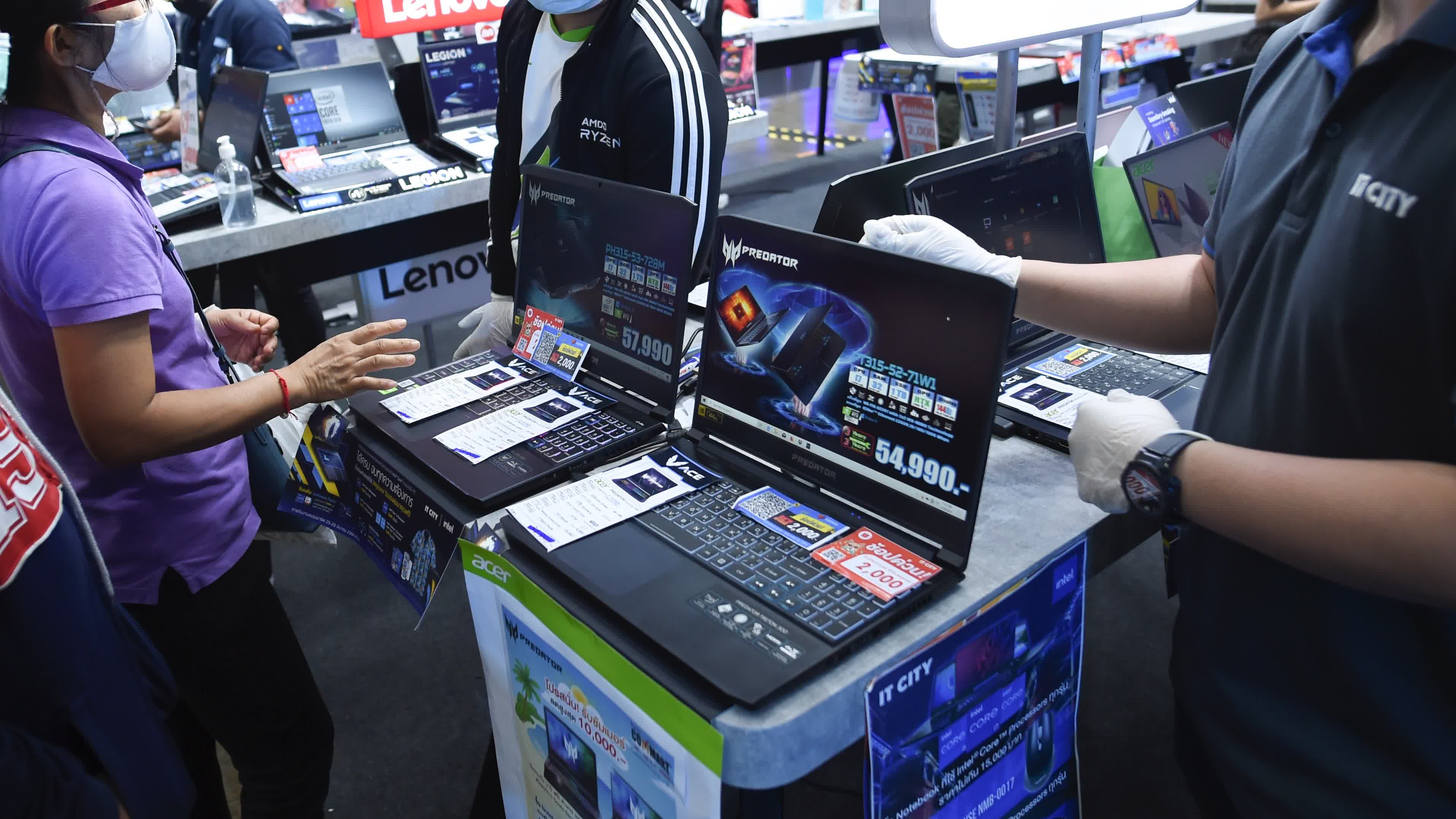In context: Since the start of 2020, PC sales have been steadily increasing, largely thanks to growth spurred by the Covid-19 pandemic. With millions of consumers working from home, demand for both personal and work computers has skyrocketed. However, that trend is finally starting to slow and even reverse – somewhat, anyway.
As of Q1 2022, global shipments for desktops and notebooks have fallen by three percent, down from Q1 2021's all-time high of 82.4 million. This year, that number has dropped to around 80.1 million. HP took the biggest hit in this regard, shipping about 15.8 million units in Q1 2022 versus the 19.2 million they managed to move the previous year.
Lenovo is next in line, with shipments dropping by around two million year-over-year (going from 20.3m to 18.3m). Other major PC and laptop vendors, including Dell, Apple, Asus, and "Others," all saw minor shipment upticks but these were not substantial enough to offset the broader decline brought on by HP and Lenovo's poorer relative performance.

There are several potential reasons for these changes but tech research firm Canalys says rising short-term prices (brought on by the conflict in Ukraine, among other issues) and natural growth slow-downs as the world adapts to life amidst a global pandemic are two major contributors. The ongoing chip shortage certainly doesn't help, either, with component supply failing to meet demand, thus driving prices up further and pushing consumers into a "wait-and-see" mindset.
With all of those roadblocks in mind, Canalys still feels the PC industry as a whole will remain strong throughout the rest of the year; at least in the enterprise and IT sectors. As the research firm notes, over 50 percent of active devices are "more than four years old," meaning a widespread "device refresh" will likely happen sooner rather than later.
Indeed, despite shipments falling in the notebook sector, the PC industry enjoyed overall revenue growth of over 15 percent this past year, hitting $70 billion in total. This is partially thanks to a 12 percent increase in desktop shipments, though sales for such machines still pale in comparison to their notebook counterparts: the former make up 16.8 million of total shipments, versus the latter's 63.2 million.
